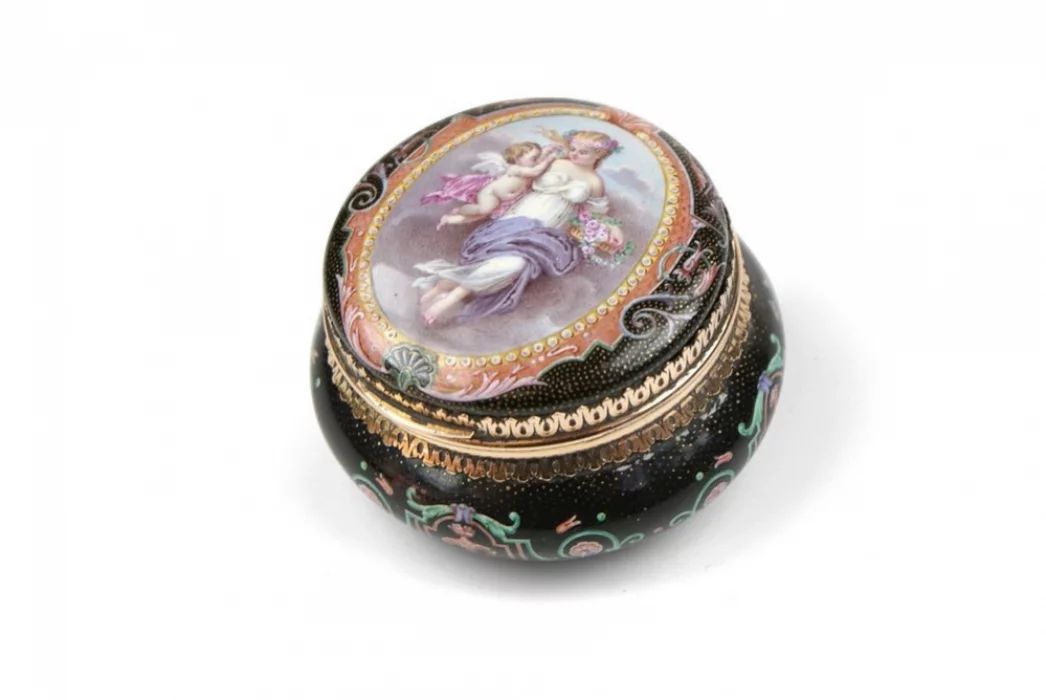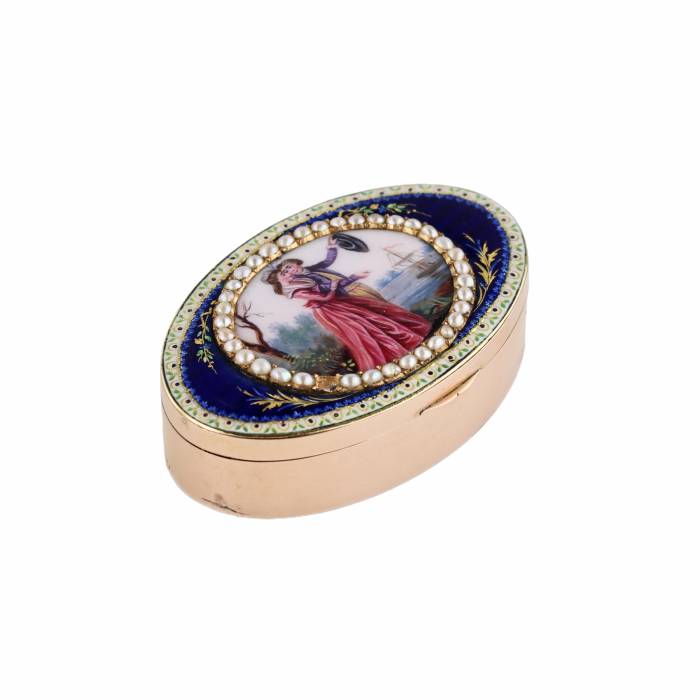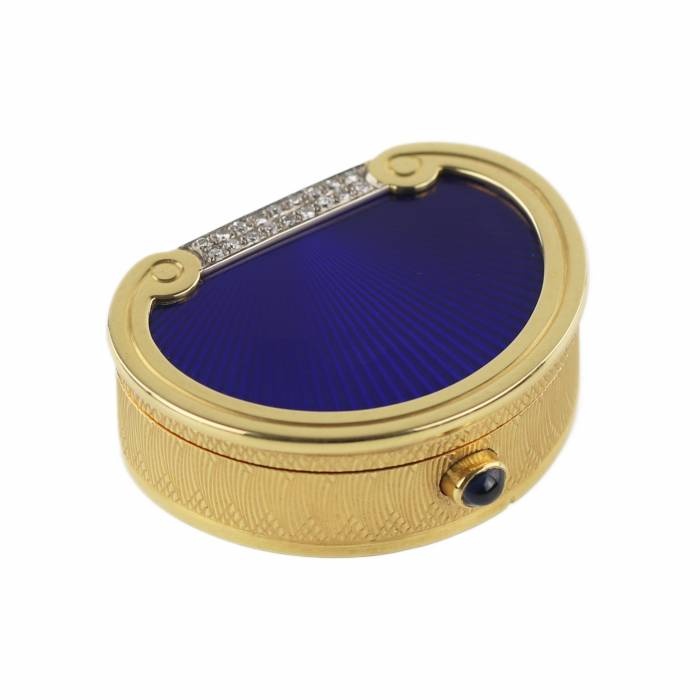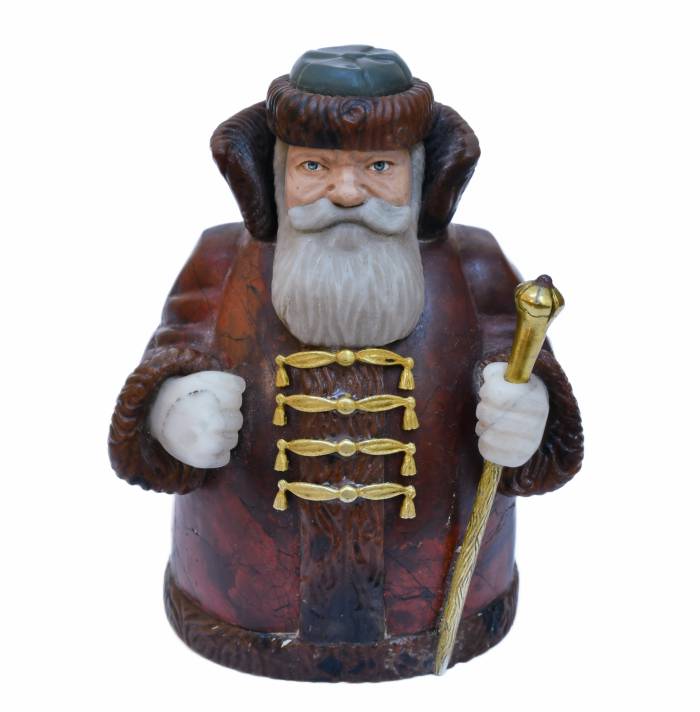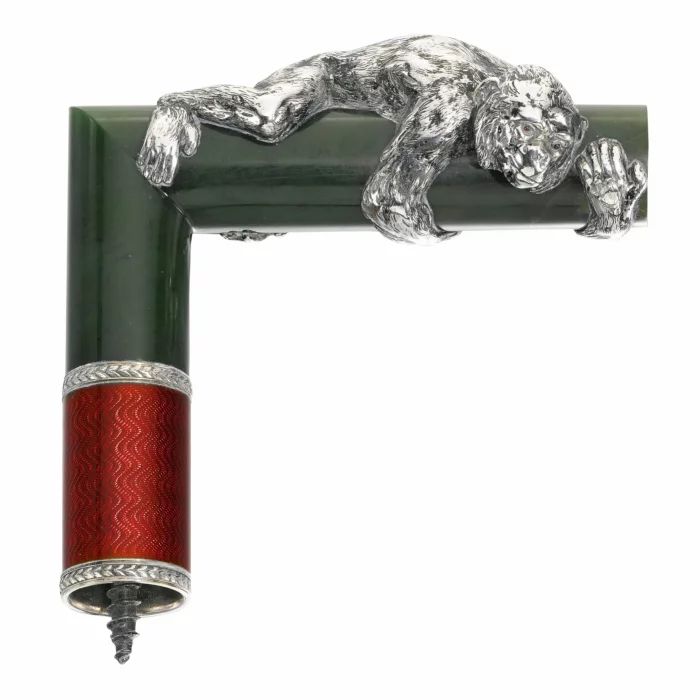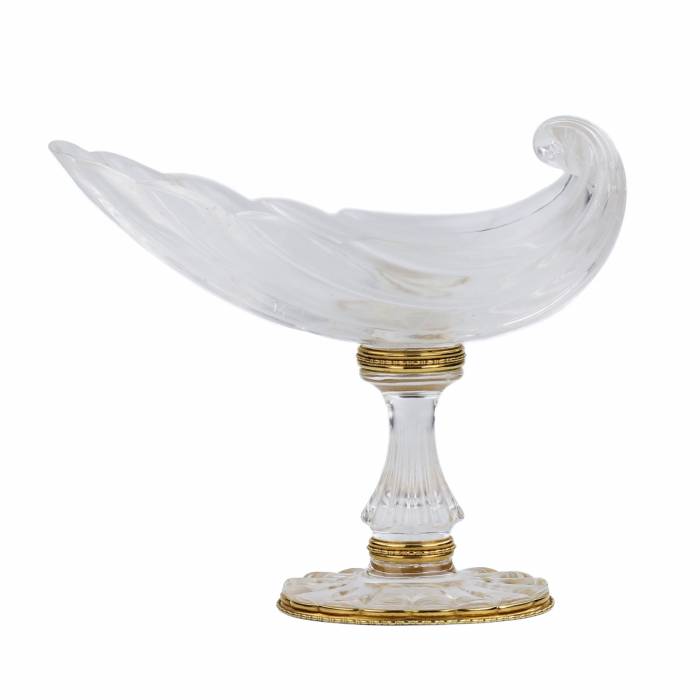
AntiqonART consultant will contact you within one business day after receiving your request.




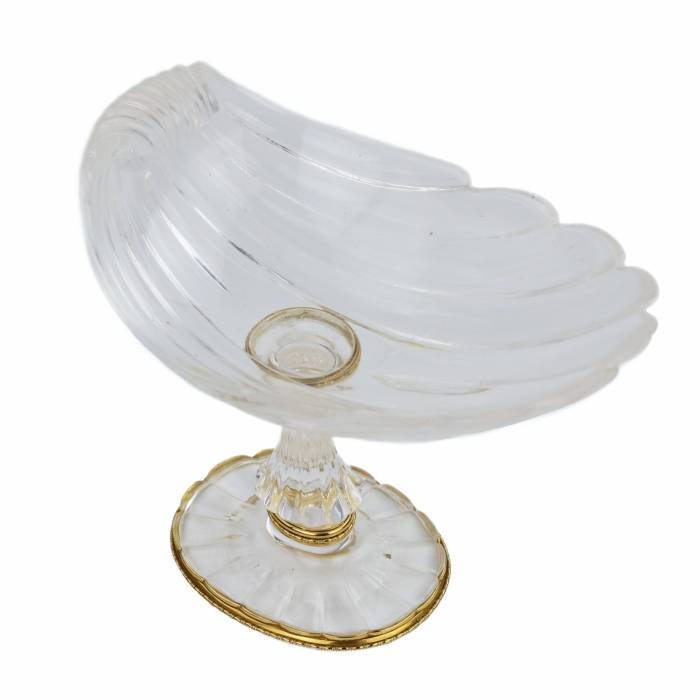




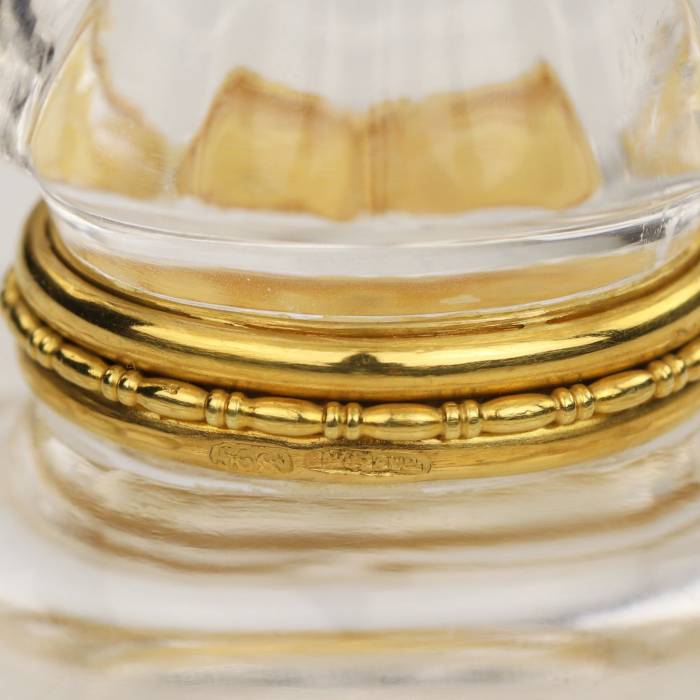










At Antiqon ART, we build trust and value your choice. Every purchase of art and antiques with us is an investment backed by our expertise, reputation, and a 100% authenticity guarantee.
Discover how the value of similar works has evolved over the past 10 years. Art is not only beauty — it's an investment.
Antiqon ART offers free packaging, insurance, and delivery for most items purchased through the company. Exceptions include large and oversized items that require specialized packing and shipping.
Le récipient repose sur un pied ovale en cristal assorti, monté sur une base ajourée décorative avec des éléments en or. La monture est exécutée en or 14 carats (titre 585), ornée d’une frise de motifs ovales perlés stylisés, emblématique du style Fabergé et de la haute tradition joaillière de la maison. L’alliance raffinée des matériaux, des formes et de la technique démontre un niveau artistique et technologique exceptionnel.Poinçons : Titre 56 (or 14K) ; poinçon de l’administration de Saint-Pétersbourg — tête de femme en kokoshnik tournée vers la droite ; poinçon « ФАБЕРЖЕ » en cyrillique dans un ovale, correspondant à la production de la succursale de Saint-Pétersbourg entre 1882 et 1899.
Dimensions :Hauteur – 14,5 cm,Coupe – 16,5 × 10 cm
Poids : 464 g
Matériaux : Cristal de roche, or (56) 585
État : Excellent état muséal
Provenance : Collection de la comtesse Fink von Finkenstein-Brinckam
Cette orientation fut rendue possible grâce à sa collaboration avec Karl Fiodorovitch Werfel, maître lapidaire et propriétaire d’une fabrique de bronzes et de pierres dures, nommé Fournisseur de la Cour impériale en 1895. Werfel détenait le monopole de l’extraction de jade en Sibérie et un accès privilégié aux meilleures variétés de minéraux rares, notamment les agates iridescentes et le quartz fumé. Son atelier se distinguait par une exécution irréprochable, parfaitement complémentaire de la joaillerie Fabergé.
Les œuvres en pierres dures issues de cette collaboration séduisirent l’aristocratie européenne et les membres de la famille impériale. Leurs formes élégantes, inspirées de la nature, et le mariage de matériaux nobles en firent des objets de prestige dignes des palais et cabinets de collectionneurs.
La valeur historique de cette coupe est rehaussée par sa provenance : elle appartenait à la comtesse Fink von Finkenstein-Brinckam, descendante d’une des plus anciennes familles nobles de Prusse, attestée depuis le XIIIe siècle. Les Finkenstein occupèrent de hauts postes à la cour royale, notamment comme chanceliers et gouverneurs de Prusse orientale. Collectionneuse et mécène, la comtesse faisait partie de l’aristocratie européenne dont les goûts influencèrent le marché de l’art au début du XXe siècle. Sa collection, remarquable par la finesse de ses choix, comprenait des œuvres impériales russes acquises lors de ventes prestigieuses et par des fournisseurs officiels. Cette coupe se distingue ainsi non seulement comme un chef-dœuvre d’orfèvrerie, mais aussi comme un artefact culturel majeur doté d’une provenance aristocratique européenne.
L’objet est conservé dans un état muséal exceptionnel. Des bandes internes horizontales, caractéristiques naturelles du cristal de roche, appelées « rideaux », sont visibles à l’intérieur de la coupe, attestant l’authenticité de la matière.
The condition report is provided for informational purposes only.
It is not comprehensive and may not reflect all defects, restorations, alterations, or adaptations, as Antiqon does not perform professional conservation-level assessments. The information is based on a qualified, yet subjective, evaluation by our specialists.Before purchasing, we recommend consultation with an independent expert.Please also consult our Terms and conditions and Glossary A-Z, which contain important information on lot characteristics and sale conditions.

Thank you for your request!
Our consultant will contact you soon.

AntiqonART consultant will contact you within one business day after receiving your request.
Thank you for your request!
Our consultant will contact you soon.

AntiqonART consultant will contact you within one business day after receiving your request.












